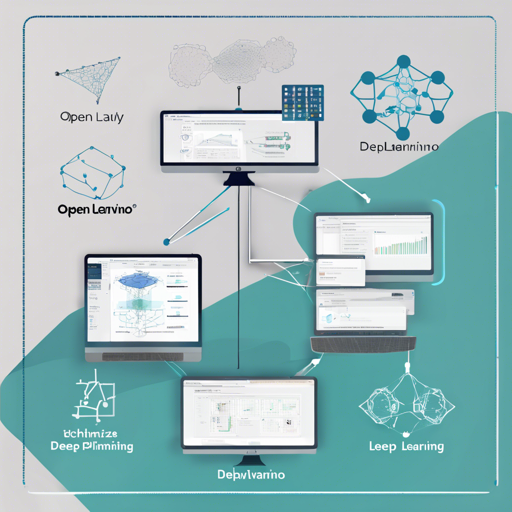Welcome to the world of OpenVINO™, an open-source software toolkit that enhances the performance of deep learning models used in various domains, including computer vision, automatic speech recognition, and natural language processing. In this article, we’ll guide you through the installation, optimization, and deployment of models using OpenVINO, ensuring you harness its full potential effectively. Let’s dive in!
Installation of OpenVINO
Getting started with OpenVINO is straightforward! Follow these steps:
- Visit the OpenVINO installation page to get your preferred distribution.
- For a quick installation, you can use the following command:
sh pip install -U openvinoWalking through OpenVINO Tutorials
Once you’ve installed OpenVINO, you’ll want to get hands-on. The OpenVINO Quickstart example is a perfect starting point to deploy your first model.
To further boost your learning, you can explore the OpenVINO Notebooks, which include:
Running Inference Using OpenVINO
Now, let’s look at how to run inference on models from PyTorch and TensorFlow using OpenVINO. To visualize this, imagine we are chefs in a restaurant, and our deep learning models are intricate recipes!
In our kitchen:
- PyTorch Model: Your raw ingredients (the model in PyTorch) need to be transformed into a gourmet dish (converted to OpenVINO). We load the ingredients, mix them together (convert the model), and finally serve the delightful dish (run inference). Here’s how you do it:
import openvino as ov
import torch
import torchvision
# Load PyTorch model into memory
model = torch.hub.load(torchvision, 'shufflenet_v2_x1_0', weights='DEFAULT')
# Convert the model into OpenVINO model
example = torch.randn(1, 3, 224, 224)
ov_model = ov.convert_model(model, example_input=(example,))
# Compile the model for CPU device
core = ov.Core()
compiled_model = core.compile_model(ov_model, 'CPU')
# Infer the model on random data
output = compiled_model(0: example.numpy())- TensorFlow Model: Here, the same process applies. Collect your ingredients, mix them thoughtfully, finalize the dish for serving (running inference), and voilà! Enjoy your A.I.-based delicacies. Here’s the code:
import numpy as np
import openvino as ov
import tensorflow as tf
# Load TensorFlow model into memory
model = tf.keras.applications.MobileNetV2(weights='imagenet')
# Convert the model into OpenVINO model
ov_model = ov.convert_model(model)
# Compile the model for CPU device
core = ov.Core()
compiled_model = core.compile_model(ov_model, 'CPU')
# Infer the model on random data
data = np.random.rand(1, 224, 224, 3)
output = compiled_model(0: data)Enhancing Performance Automatically
OpenVINO includes automatic performance enhancements tailored to your hardware without sacrificing model accuracy. Techniques like asynchronous execution, batch processing, and tensor fusion ensure your models run smoothly and efficiently across various platforms.
Troubleshooting
While working with OpenVINO, you may encounter some bumps along the road. Here are a few troubleshooting tips:
- Installation Issues: Ensure that your system meets the defined requirements and dependencies are installed correctly.
- Model Conversion Errors: Double-check that your models are compatible with OpenVINO and verify their structure.
- Inference Failures: If the inference does not work as expected, make sure you are providing the right input shape.
For more insights, updates, or to collaborate on AI development projects, stay connected with fxis.ai.
OpenVINO Ecosystem and Resources
The OpenVINO ecosystem is robust, supporting various tools like:
- Optimum Intel for optimizing Transformers and Diffusers models.
- Neural Network Compression Framework (NNCF) for model optimization techniques.
- GenAI Repository for Generative AI applications.
For comprehensive documentation and support, you can access the user documentation or visit the GitHub Issues page for assistance.
At fxis.ai, we believe that such advancements are crucial for the future of AI, as they enable more comprehensive and effective solutions. Our team is continually exploring new methodologies to push the envelope in artificial intelligence, ensuring that our clients benefit from the latest technological innovations.

